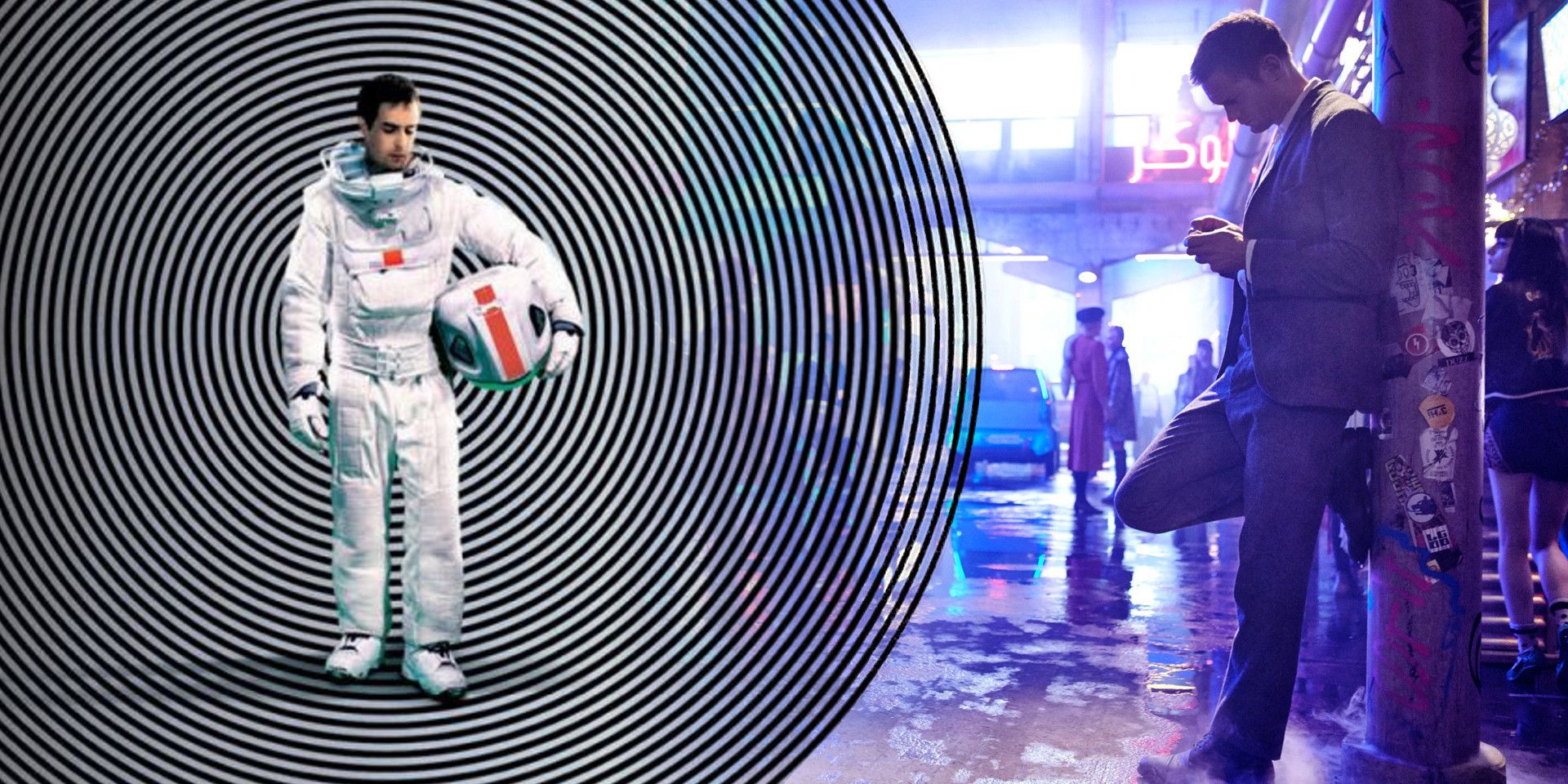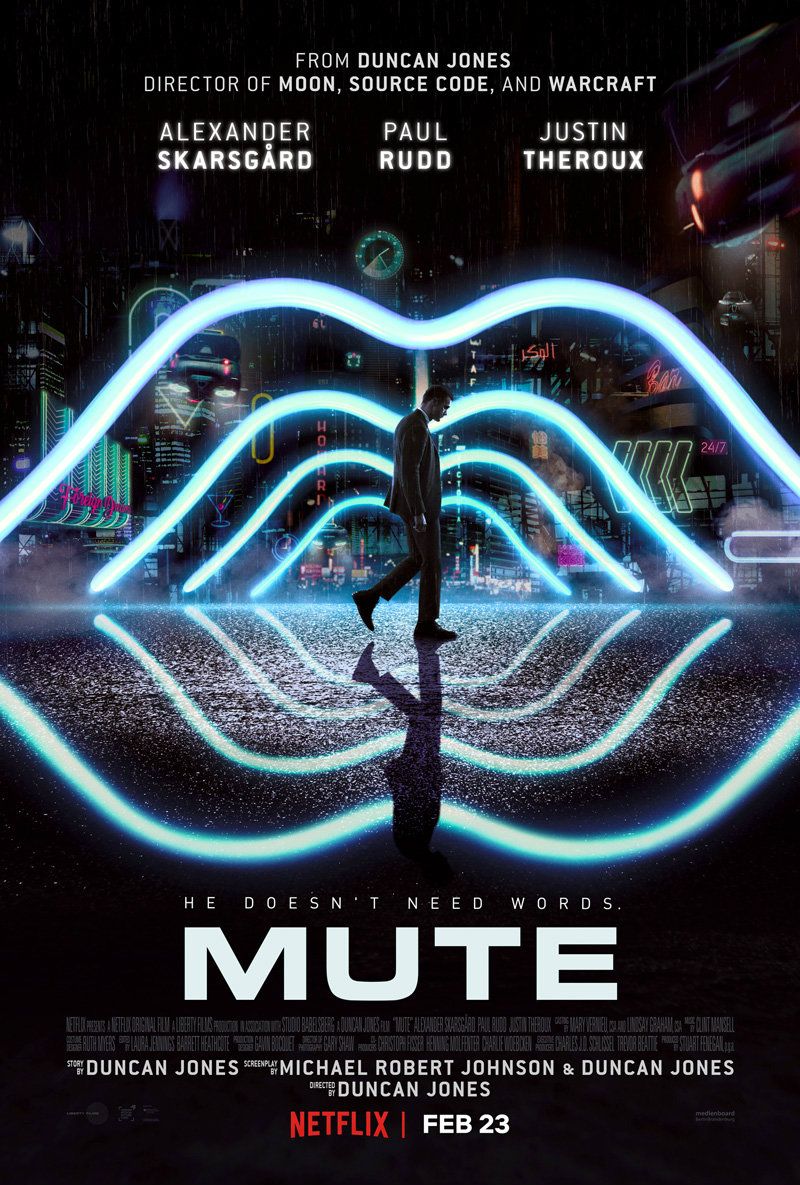Mute has been described as a spiritual sequel to director Duncan Jones' debut feature Moon, but the connection between the two movies goes further than both being old school sci-fi dramas. They are actually set in the same world, with several key aspects - and characters - from the 2009 film appearing in the Netflix release. Mute is, technically, Moon 2.
Of course, we've known this for almost as long as Mute has been a thing. Duncan Jones' passion project has been gestating for over a decade and pretty much from the beginning he's made clear it would feature a return of Sam Bell and his clones, played by Sam Rockwell.
Related: Mute's Ending Explained
But more than just an Easter Egg, these references stack up to present an interesting, proto-shared universe. What does it mean and, perhaps more importantly, does it actually work? We're going to take a look.
This Page: Mute Reveals What Happened After The End Of Moon
Moon's Sam Bell Clones Explained
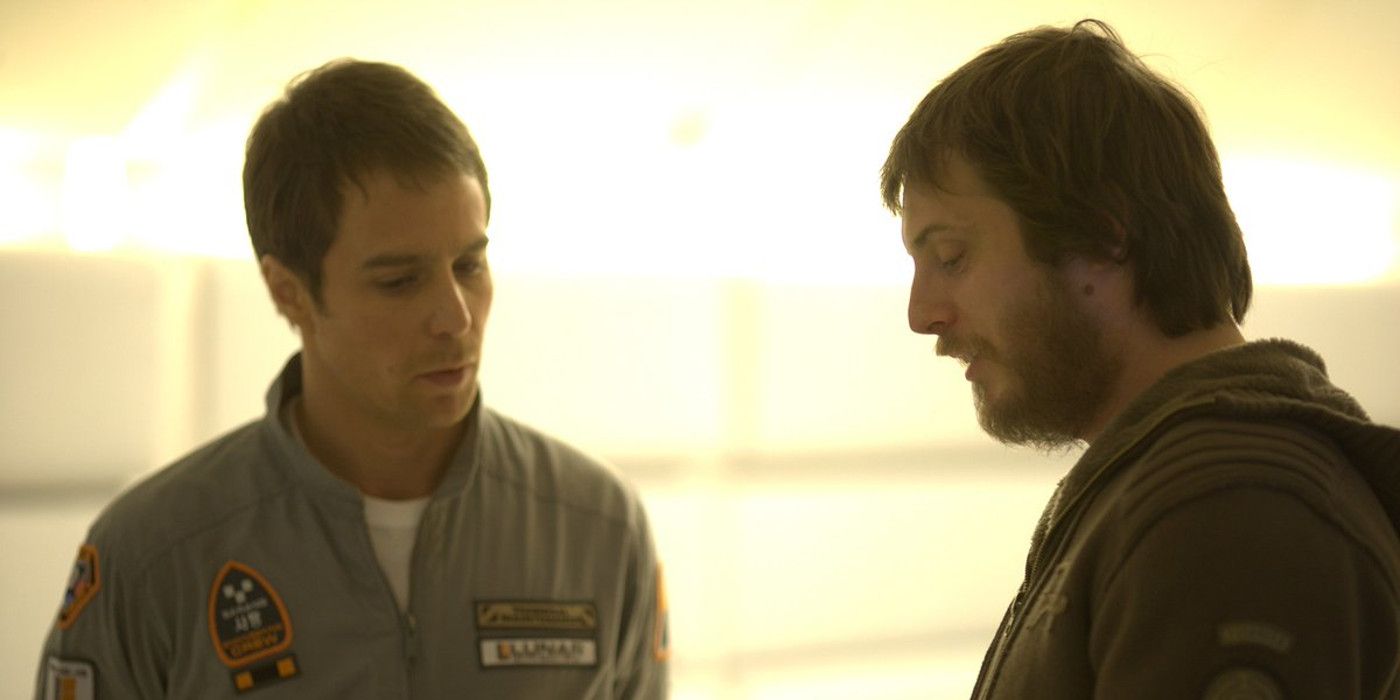
Moon was set in a near-future where the world's energy crisis had been solved with the mining of helium-3 from the lunar surface. The only downside is that it requires someone stationed on the moon to oversee the transporting of the fuel to Earth and maintaining machinery. Enter Sam Bell, the lone Lunar Industries employee on the moon who, when the film begins, is coming to the end of a three-year contract.
However, the Sam we're introduced isn't the real Sam Bell: he's a clone. Beneath the base is a vault of replicants, each with an in-built three-year lifespan who the company are slowly working through as free labor. This is finally exposed when an accident leads to the first Sam being presumed dead, a new clone is activated and two meet. The company sends a kill squad to reset the base, but the Sams - with the help of the decidedly un-HAL robot Gerty - cover up their meeting and send the newer clone to Earth to reveal the conspiracy.
The movie ends with a quick burst of news audio teasing what happened after the clone arrived, leading to court cases and immigrant debates.
Mute Reveals What Happened After The End Of Moon
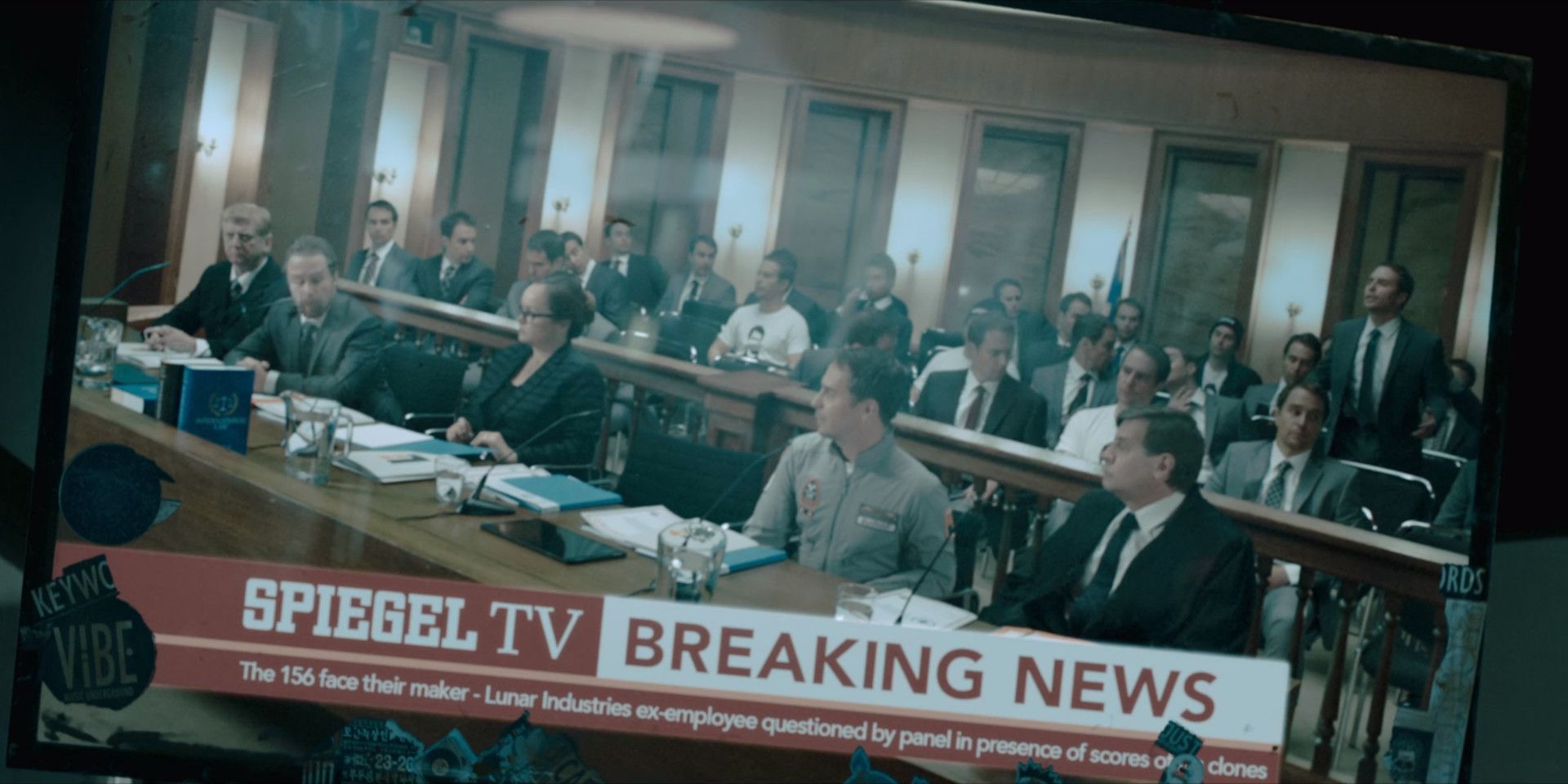
In the background to Mute's disappearance mystery, we essentially get a sequel to Moon. Early on, when Leo (Alexander Skarsgård) first meets Cactus (Paul Rudd) in the cafe, a hearing involving dozens of Sam Bell clones in unfolding. It would appear the on-ice Sams from the moon base have all been awoken and, given that a Sam is both defense and prosecution in the case, the situation has developed into the debate of identity: how can clones be assigned identity in the real world? The Sam that is speaking appears older than the others and is the only one to have a beard, so it's possible he's the original, or at least thinks he is. The larger situation, however, appears to be the clones are going after Lunar Industries, with the footer for the news broadcast stating "The 156 face their maker - Lunar Industries ex-employees questioned by panel in presence of score of clones."
Related: Where Do You Recognize The Cast of Mute From?
Later, a "Justice for the 156" billboard is seen in the background, revealing at a human protest movement in defense of the Sam Bells. Then, nearer the end, a recurring news report plays on multiple background TVs showing several Sams giving a press statement, hinting at a victory. Beyond Moon providing the resolution the main two Sams' plight, Mute suggests a brighter future for all.
Other Moon Connections In Mute
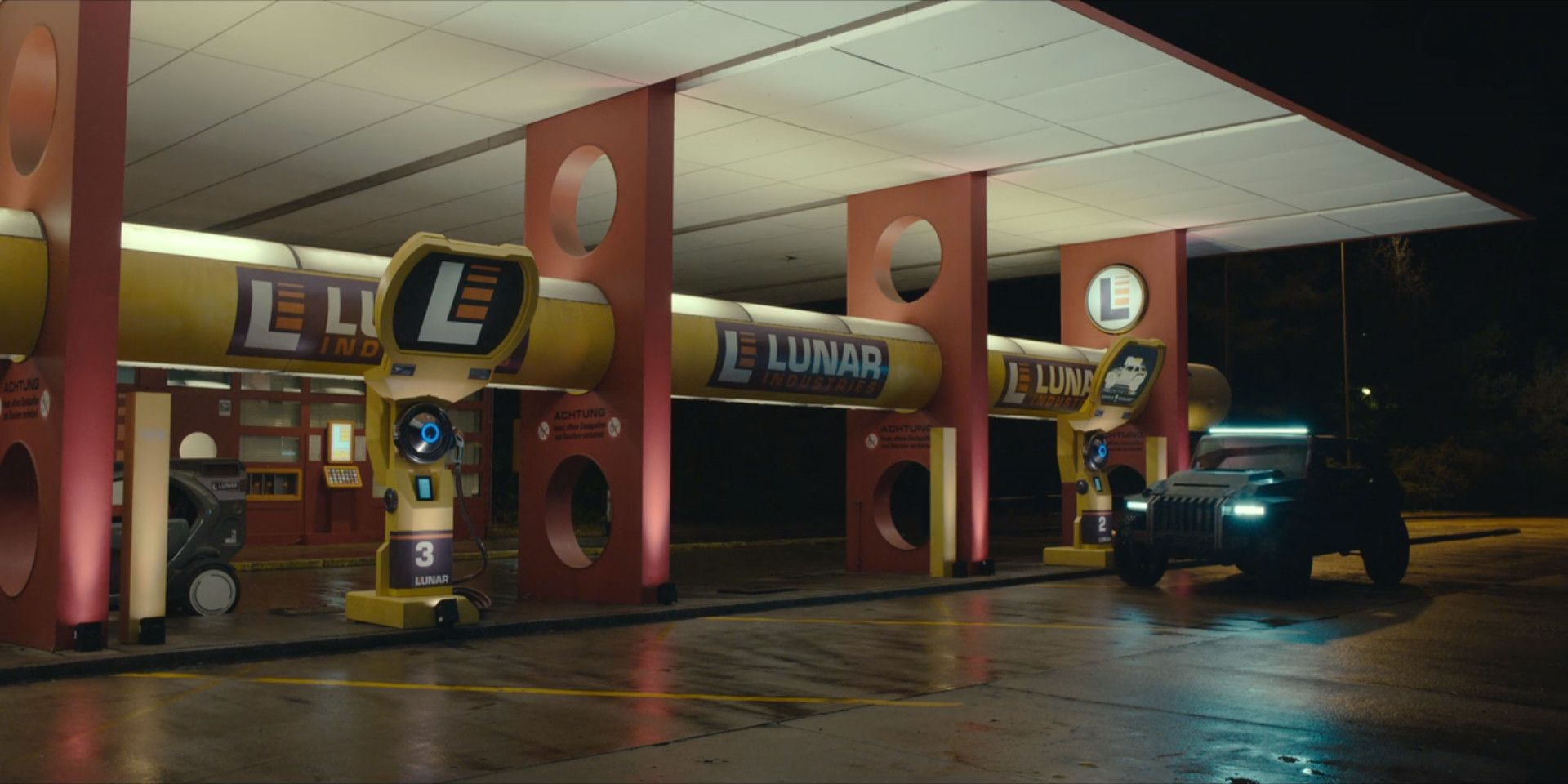
The Sam Bell suit isn't the only connection between Moon and Mute, however. In the bowling alley, a ticker teases a news story about an alleged malfunction of the Gerty robots caused by moon dust. This may be an in-universe explanation for why the Kevin Spacey-voiced robot helped Sam at the expense of the company, a move that follows some programming axioms but contradicts others. The explanation fits - it was suggested in Moon that there were problems with the station - although it may also be a move on Lunar Industries to save face and avoid further controversy beyond the Sam Bell case.
Lunar are definitely still dominant. In Moon, they were responsible for 70% of the Earth's fuel, and while Mute doesn't divulge details, we see them still present via a gas station - complete with branded snack dispenser - and a power plant. It's slight, but suggestive that whatever the Sams' victory, the company's fortunes weren't hurt.
On a more subtle level, the worlds of the two movies share a general technological outlook. Both feature a semi-analog twist on modern digital tech - the bulky, grainy communication device in Moon fits right alongside Mute's sliding phone with buttons - and aim to evoke the style of 1970s/1980s sci-fi: Alien and Blade Runner especially.
What The Mute/Moon Shared Universe Means

Beyond providing us with a stealth Moon 2, what does all this crossover really mean? On the face of it, it's all a bit of fun, some added value in Mute to fans of the director's previous films. Hardly surprising given Jones' sci-fi credentials; this is exactly what fans often theorize about, finding ways to place various films in the same world.
Related: Does Mute Have An End-Credits Scene?
Neither is this necessarily new. Two decades before Blade Runner 2049 provided a proper sequel to Ridley Scott's classic, the Kurt Russel-starring Soldier gave a taste of that movie's off-world colonies, featuring battered spinners and even revealing the Tannhauser Gate. More obtusely, earlier this month The Cloverfield Paradox connected up to the original found footage monster movie (albeit in a rather obtuse fashion). Of course, what Mute's done is a lot more focused given both films are from Duncan Jones and the idea has been present from early on in the film's development.
But, putting aside the innate excitement factor, was this actually done well? The Sam Bell courtroom scene is played for laughs, which is fair given Rockwell's comedic timing and the snapshot manner, but it undercuts the strength of the background narrative. There's also the fact that the same press statement clip is played multiple times on different days, which gets repetitive and begins to break down the sense of a living universe outside the events of the movie. Although neither of these are the real problem.
The Moon/Mute Timeline Doesn't Work
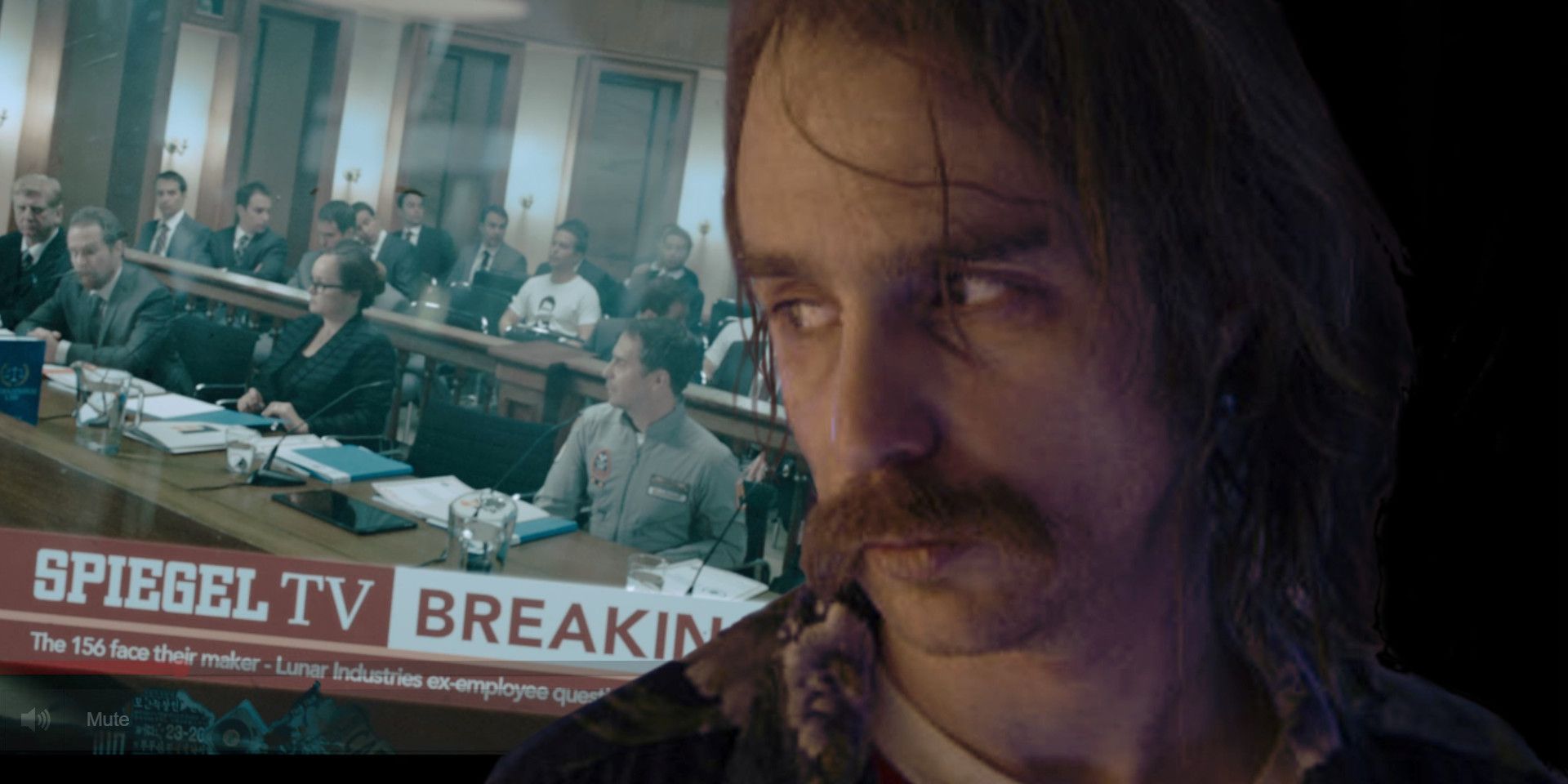
The big problem here (albeit one that it must be stressed doesn't matter too much given how slight the references amount to), is that the timeline doesn't feasibly work.
Moon is set in 2035, and while no date for Mute is given, the synopsis says it's set "forty years from today". That would put it in 2058, over two decades on from its predecessor. Despite this gap, the Sam Bell clones don't only look the same, they're still alive. It's heavily implied in Moon that the clones have an in-built three-year lifespan to better control them; the long-serving Sam becomes fatally ill by the end of the movie, and security footage shows this happened to previous versions before Lunar Industries incinerated them.
It's possible that the Sam Bells were only recently woken up, or that Mute's synopsis isn't accurate, but based on the evidence there's a discrepancy.
-
None of this is to downplay the giddy thrill seeing Rockwell turn up in Mute provides (it's the highlight of an otherwise disappointing film): it merely shows how it doesn't really go beyond cheeky wink, not hinting at any grander plan.
